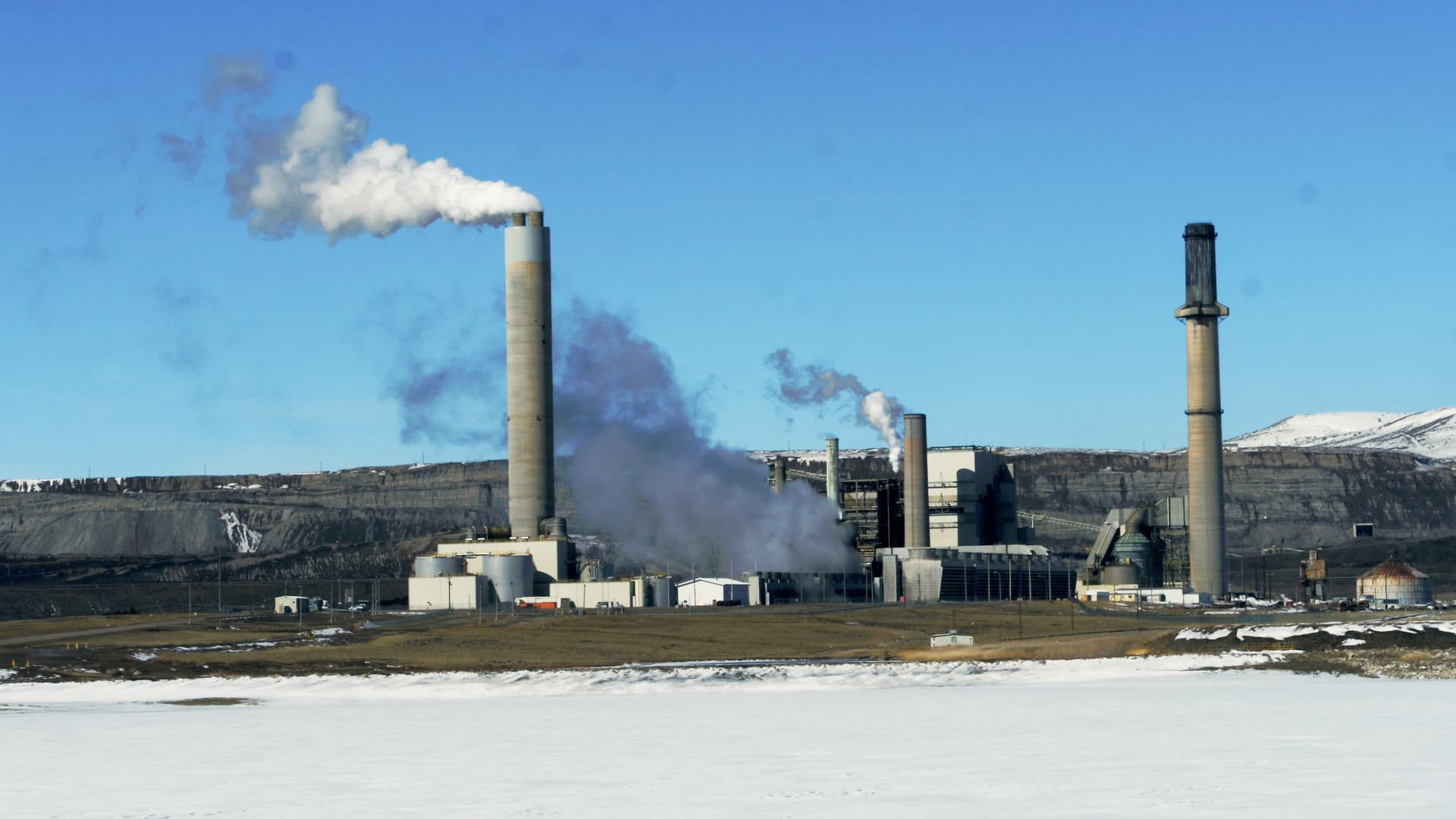An artist rendering of the advanced nuclear power reactor demonstration project that Bill Gates’ nuclear innovation company, TerraPower, plans to build in the frontier-era coal town, Kemmerer, Wyoming.
Rendering courtesy TerraPower
TerraPower‘s advanced reactor demonstration will face delays of at least two years because its only source of fuel was Russia, and the Ukraine war has closed the door on that trade relationship. The Bill Gates-backed company is planning to build its first reactor in the frontier-era coal town of Kemmerer, Wyoming and had hoped to finish it by 2028.
“In February 2022, Russia’s invasion of Ukraine caused the only commercial source of HALEU fuel to no longer be a viable part of the supply chain for TerraPower, as well as for others in our industry,” Chris Levesque, the CEO of TerraPower, said in a written statement sent to the company’s newsletter recipients on Wednesday.
“Given the lack of fuel availability now, and that there has been no construction started on new fuel enrichment facilities, TerraPower is anticipating a minimum of a two-year delay to being able to bring the Natrium reactor into operation,” Levesque said.
Terrapower’s advanced nuclear plant design, known as Natrium, will be smaller than conventional nuclear reactors, and is slated to cost $4 billion, with half of that money coming from the U.S. Department of Energy. It will offer baseload power of 345 megawatts, with the potential to expand its capacity to 500 megawatts — about half of what is needed to power a mid-size city, according to a rule of thumb Gates provided in his book, “How to Avoid a Climate Disaster.
But the plant depends on high-assay low-enriched uranium, or HALEU. The existing fleet of nuclear reactors in the United States runs uranium-235 fuel enriched up to 5%, the Department of Energy says, while HALEU is enriched between 5% and 20%.
The United States does not have the enrichment capacity to supply commercial amounts of HALEU fuel and so TerraPower had “assumed the use of HALEU from Russia for our first core load,” Levesque wrote.
Since the war broke out in February and it became clear that Russia could no longer be a reliable trade partner, TerraPower, the Department of Energy and other stakeholders have been looking for alternate sources of HALEU fuel. They are also pushing lawmakers to approve $2.1 billion to support HALEU production, according to Levesque.
Wyoming Senator John Barrasso, a Republican, thinks it’s a wake-up call for the U.S.
“America must reestablish itself as the global leader in nuclear energy,” Barrasso said in a written statement. “Instead of relying on our adversaries like Russia for uranium, the United States must produce its own supply of advanced nuclear fuel.”
Barrasso sent a letter to Senate Energy Committee Chairman Joe Manchin, D-W.Va., requesting a hearing about the availability of HALEU. Barrasso also sent a letter to the Energy Secretary Jennifer Granholm to urge the United States to move faster in securing a source of HALEU.
The Department of Energy has “sufficient stockpiles of excess and previously used uranium to meet TerraPower’s needs,” but it has “yet to process sufficient amounts of this excess uranium into HALEU,” Barrasso said in the letter to Granholm. “At this point, no single pathway will likely be sufficient to meet TerraPower’s schedule.”
Currently, 800 engineers are working to complete the plant’s design, and TerraPower expects the project will employ as many as 2,000 workers to build the plant in the mid-2020s.
TerraPower has raised over $830 million in private funding in 2022 and the Congress has appropriated $1.6 billion for the construction of the plant, Levesque said.
For all the latest Technology News Click Here
For the latest news and updates, follow us on Google News.

